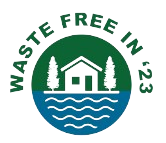Comparing Treatment Strategies for Food and Faecal Waste (Lalander et al., 2017)
This study looks at four different ways to treat food and human waste: composting, Black Soldier Fly (BSF) treatment, anaerobic digestion (AD), and a combination of BSF treatment followed by AD. The research was conducted in Sweden but provides lessons that can help both developed and developing countries manage waste better.
Why Waste Treatment is Important
Managing food and human waste is a big problem, especially in low-income countries where waste often ends up dumped in the environment, polluting water and spreading diseases. Organic waste has nutrients and energy that can be reused if handled properly. Treating it the right way can help reduce pollution, provide valuable products like fertilizer and bioenergy, and even create jobs.
The Four Treatment Strategies
Composting: Organic waste is broken down by bacteria in the presence of oxygen, producing compost that can be used as fertilizer. However, it releases greenhouse gases like methane and needs regular maintenance.
BSF Treatment: Black Soldier Fly larvae eat organic waste and turn it into protein-rich larvae for animal feed, leaving behind nutrient-rich frass (larvae droppings) that can be used as fertilizer.
Anaerobic Digestion (AD): This process breaks down waste without oxygen, creating biogas (a source of renewable energy) and digestate (a fertilizer).
BSF + AD: This is a combination where waste is first treated by BSF, and the leftover frass is then processed in an anaerobic digester. This approach maximizes resource recovery by producing both animal feed and bioenergy.
Economic and Environmental Benefits
Economic Advantages: BSF treatment produces valuable larvae that can replace expensive soybean and fish meal in animal feed. This can lower costs for farmers. Anaerobic digestion generates renewable biogas that can reduce energy expenses. Composting and digestate provide cheap fertilizers for farming. Combining BSF and AD offers the most value by producing multiple products from the same waste.
Environmental Benefits: Treating waste with BSF and AD significantly reduces greenhouse gas emissions compared to landfilling or composting alone. The BSF + AD method avoids methane emissions and captures biogas for energy use, making it a cleaner solution. Composting, though better than dumping, still releases harmful gases if not managed well.
Which is the Best Method?
The study found that the best solution depends on the local situation. In areas where AD plants already exist, combining BSF and AD is the most effective because it produces both energy and animal feed. In places without AD facilities, BSF treatment alone is the most economical and environmentally friendly option.
Conclusion
By treating food and human waste properly, communities can turn a problem into a solution. Waste management can provide animal feed, renewable energy, and fertilizers while reducing pollution. Encouraging BSF treatment and anaerobic digestion can create jobs, protect the environment, and help farmers save money. These methods offer a sustainable way forward for waste management in both developed and developing countries.
Read the full paper here: A Comparison in Product-Value Potential in Four Treatment Strategies for Food Waste and Faeces
Got questions?

